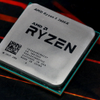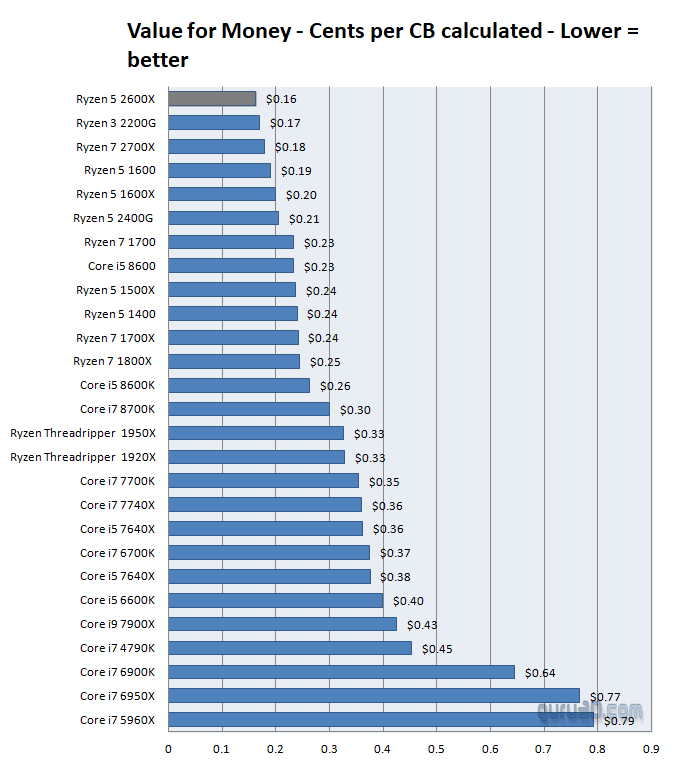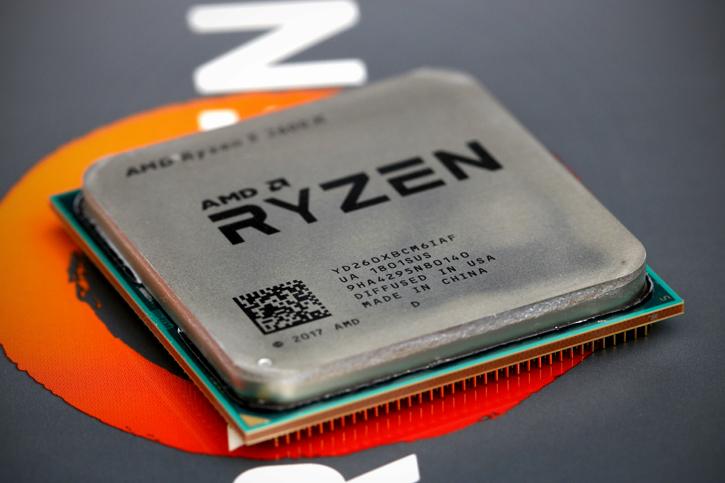Conclusion
Final Words
The Ryzen 5 2600X offers a nice little extra bump in performance when compared to the 1600X. It's not massive and as extensive as what the 2700X is to the 1700X, but it is a step forward with what pretty much is a bit of a die-shrink and tweaking. Ryzen has evolved and matured, it all adds up from lower latency, better memory support, faster base clock, higher turbo bins, the accumulation of it all is what has become Ryzen 2000. It is a very fast threading processor series. Game performance at the lowest resolution, again, Intel wins there but the margin and gap have become smaller. Everything is trivial towards pricing, and what I did not see coming is the price level of the new Ryzen 2000 series. The asking price of 229 USD for this six-core part is just a really good value proposition. With Ryzen 2000 / Zen+ the 3.8~4.0 GHz domain also has been breached. this 12nm Zen+ generation can manage 4.2 GHz just fine. The proof is in the pudding though, and that becomes clear when we move into the next chapter of this page.
Price and value
Gaming performance
Previous Ryzen reviews have taught me that it is extremely hard to convince a big part of the guru3d community and reader base that Ryzen is plenty fast for gaming. The new Zen+ processors and the respective platform overall bring a bit more oomph compared to last year's Ryzen. The fact remains, that if you take a Core i7 8700K it will still beat Ryzen in CPU bound gaming situations (low resolutions or extremely high refresh rate where a game is not GPU bound). The difference and gap towards Intel are getting smaller though. Get yourself a nice G.Skill FlareX memory kit at 3200 MHz and you've covered your gaming bases. Keep in mind that a CPU bottleneck always has been far less important compared to a GPU bottleneck, which why I'll keep saying it, that differential is trivial at best. Honestly, with the money you save on this processor compared directly to the cheapest Intel processor you can find, you probably should invest in a faster graphics cards.
|
Ryzen |
Cores |
Threads |
Boost/Base |
Cache |
TDP |
COOLER |
SEP (USD) |
|
Ryzen 7 2700X |
8 |
16 |
4.3/3.7 |
20MB |
105W |
Wraith Prism (LED) |
$329 |
|
Ryzen 7 2700 |
8 |
16 |
4.1/3.2 |
20MB |
65W |
Wraith Spire (LED) |
$299 |
|
Ryzen 5 2600X |
6 |
12 |
4.2/3.6 |
19MB |
95W |
Wraith Spire |
$229 |
|
Ryzen 5 2600 |
6 |
12 |
3.9/3.4 |
19MB |
65W |
Wraith Stealth |
$199 |
DDR4 Memory
The latest firmware for both the older 300 chipsets series and the new 400 Chipset series including the X470 have matured and is an accumulation of DDR4 memory support that evolved when the original Ryzen series was released. Memory compatibility should not and likely will not be an issue as long as you stick to recently released DIMMs. I'll keep repeating this, but there are some really good Ryzen optimized kits out there. The G.Skill Flare X series at 3200 MHz CL14 is hitting a nice sweet-spot and is 100% stable + optimized for your Ryzen infrastructure. We also tested the new Ryzen Sniper X optimized kit from G.Skill, it runs 3400 MHz straight out of the box and will bring your memory bandwidth in the 50K ranges. However, take my advice: Flare X at 3200 MHz CL14. Install it, activate the profile in the BIOS, restart ... and never look back.
Energy efficiency
A full PC at idle will sit in the 50 Watt range with a dedicated graphics card installed (GeForce GTX 1080 / 16 GB memory / SSD and the motherboard). When we stressed the processors with a Prime 1024M run we reached roughly 160 Watts. A threaded CB15 run, however, reveals close to 180 Watts of power consumption (for the entire PC). That certainly is a bit on the high side. When we game we hover at ~270 Watts, but obviously that factor is dependent on the type of game and graphics card you use of course. So yeah, it's all a notch higher with the 2600X and 2700X for sure, it's up to you whether or not this is a relevant thing for your purchasing choices.
The Tweak
The original Ryzen series from 2017 revealed clocks in the 3900~4000 MHz ranges on all cores. For Ryzen 2000 / Zen+ you may add roughly 10% on that frequency. In our findings, these processors will reach 4200/4300 MHz. Our Ryzen 5 2600X was able to reach a stable 4300 MHz with air cooling. Do not expect performance differences that are miraculous, as the 2700X definitely is already spiced up and often reaching the highest performance levels already. If you tweak to the maximum, likely ~1.425v is the need for a stable 4.3 GHz on all cores, for us that was the equilibrium threshold on the 2600X processor, 100% stable.
The conclusion
I find the 2700X increase in performance really good, the 2600X, however, feels a bit more ordinary with a small extra bump in performance. The reality if that isn't even relevant as to what makes this processor so sweet, really is its pricing of 229 USD. I mean, for that dough you receive the flagship 6-core part with 12 threads with turbos that can reach 4.2 GHz, actually, I've seen it boost to 4.25 GHz thanks to XFR2 :-)
The new Ryzen Zen+ processors have been tweaked and optimized, the platforms feels right, it really is a good, properly done processor series. Is it worth upgrading from your original Ryzen processor? Hmm, here I'd have to say no, and that is the honest brutal truth. The extra 10 to 20% performance (depending what processor you are coming from) on your threading madness really isn't going to make the difference, and that is same for gaming. Those however that have been waiting with an outdated PC, thinking it's time for something new. Well, yeah here it makes sense. I think the 2700X offers excellent value for money for performance, the 2600X offers really good value for money, it is a small distinction, but it really is that. Combined with the X470 chipset, you get versatile and super fast features bringing your PC experience into the year 2018 at proper performance levels. Also, you'll have plenty of PCIe lanes available and your M2 SSD will get a dedicated x4 PCIe 3.0 lanes directly from the processor, it cannot get any faster. When you opt to build a proper mainstream to high-end gaming (but not enthusiast) PC with a dedicated graphics, the sky is the limit. We do need to factor in though that for Ryzen gaming you need reasonably fast frequency memory, and that is more expensive. With the flagship six-core, X model (2600X) AMD offers a refined, properly threading CPU with highly tuned Turbo boosting bins for you, you've seen the tweaked results, really there is no need for overclocking at such boost frequencies. Overall if you want a fast and snazzy PC the 2600X will offer a truly fast PC. All that at a price of 229 USD. However if you can spare an extra 100 bucks, the 2700X is just king of happy threading, well done AMD.
ATH +++
- Hilbert out
- Sign up to receive a notice when we publish a new article
- Or go back to Guru3D's front page.
“A mind needs books as a sword needs a whetstone if it is to keep its edge.”




